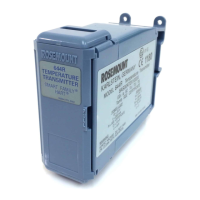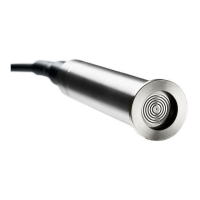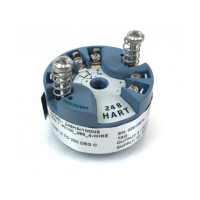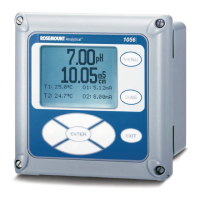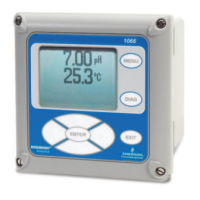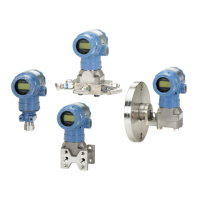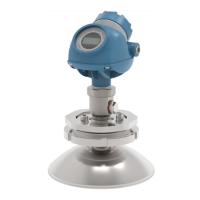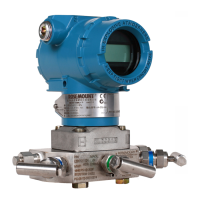71
Reference Manual
00809-0200-4728, Rev SA
Troubleshooting
July 2018
Troubleshooting
5.5.3 Performing a scaled output trim
The scaled output trim matches the 4 and 20mA points to a user-selectable reference scale other than 4
and 20 mA (2–10 volts, for example). To perform a scaled D/A trim, connect an accurate reference meter
to the transmitter and trim the output signal to scale as outlined in the “Trim the analog output”
procedure.
Field Communicator
1. Connect an accurate reference meter to the transmitter at the CONNECT REFERENCE METER prompt
by shunting the power to the transmitter through the reference meter at some point in the loop.
From the HOME screen, enter the Fast Key sequence.
AMS Device Manager
1. Right click on the device and select Service Tools.
2. In the left navigation pane select Maintenance.
3. Find the Analog Calibration tab and select the Scaled Trim button.
4. Follow the screen prompts through the Analog Trimming process.
5.6 Transmitter-sensor matching
Use Transmitter-Sensor Matching to enhance the temperature measurement accuracy of the system and
if you have a sensor with Callendar-Van Dusen constants. When ordered from Emerson
™
, sensors with
Callendar-Van Dusen constants are NIST-traceable.
The Rosemount 644 accepts Callendar-Van Dusen constants from a calibrated RTD schedule and
generates a special custom curve to match that specific sensor Resistance vs. Temperature performance.
Figure 5-6.
Figure 5-6. Standard vs. Actual Sensor Curve
Matching the specific sensor curve with the transmitter significantly enhances the temperature
measurement accuracy. See the comparison below in Ta ble 5 -1.
Device Dashboard Fast Keys
3, 4, 5, 2
Standard IEC 751
“Ideal” Curve
(1)
Actual Curve
Temperature, °C
Resistance, Ohm
0 °C
(1) The Actual Curve is identified from the Callendar-Van Dusen equation.
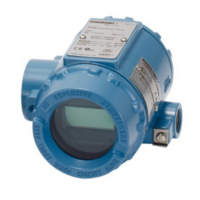
